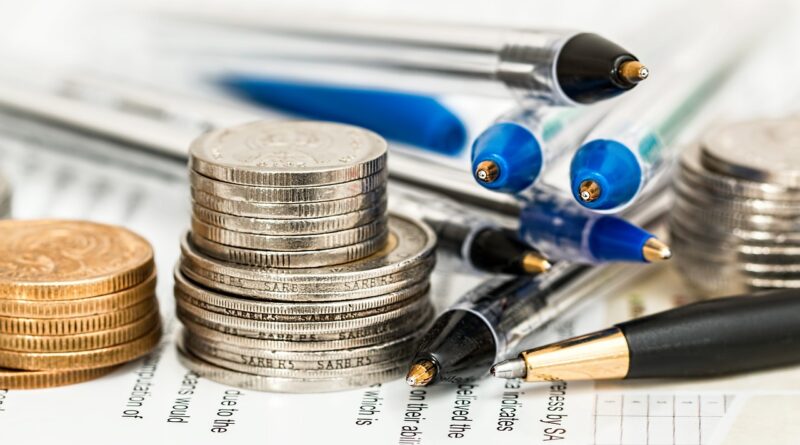Maryland Is 2025’s State with the 9th Highest Tax Burden – WalletHub Study
With Tax Day approaching on April 15, the personal-finance website WalletHub today released its 2025 Tax Burden by State report, as well as expert commentary.
In order to determine which states tax their residents most aggressively, WalletHub compared the 50 states based on the three components of state tax burden — property taxes, individual income taxes, and sales and excise taxes — as a share of total personal income.
- 9th – Overall Tax Burden (10.04%)
- 26th – Property Tax Burden (2.63%)
- 3rd – Individual Income Tax Burden (4.47%)
- 38th – Total Sales & Excise Tax Burden (2.94%)
For the full report, please visit:
https://wallethub.com/edu/
Key takeaways and WalletHub commentary are included below in text and video format.
 “It’s easy to be dismayed at tax time when you see just how much of your income you lose. Living in a state with a low tax burden can alleviate some of that stress. Some states charge no income tax or no sales tax, although all states have some form of property taxes and excise taxes.”
“It’s easy to be dismayed at tax time when you see just how much of your income you lose. Living in a state with a low tax burden can alleviate some of that stress. Some states charge no income tax or no sales tax, although all states have some form of property taxes and excise taxes.”
—
“New York has the highest individual income tax burden, while Vermont has the highest property tax burden, and Hawaii has the highest sales and excise tax burden. When considering all types of taxes together, Hawaii has the highest overall burden.”
– Chip Lupo, WalletHub Analyst
Expert Commentary
What’s the relationship between a state’s tax burden and its economic growth?
“We live in a competitive federal system. Any jurisdiction that taxes higher than its neighbors is at risk of losing its people and businesses. But establishing a firm relationship between tax rates and growth is tenuous, and econometric studies may reflect that ideological inclination of its authors. Further, we know that tax rates cannot be studied in isolation from broader quality of life and service provision. Low tax rate communities that are ‘service poor’ may not grow economically relative to higher-tax peers that offer high quality of life and good public schools.”
Dr. Howard A. Frank – Professor, Florida International University; Editor-in-Chief, Public Administration Quarterly
“The link between taxes and economic performance is complex. On one hand, all taxes drive a wedge between demand and supply, raising the prices paid by buyers, lowering the price received by sellers, and obstructing trades that would otherwise take place. The higher the tax, the greater the impediment to economic activity. But on the other hand, taxes also fund public services that are essential to modern, developed economies like a justice system that enforces business contracts and physical infrastructure like ports, bridges, and roads that facilitate the movement of people and goods to markets.”
Dr. Steven P. Lanza – Associate Professor in Residence, University of Connecticut
Should states and localities tax property at different marginal rates like they do income?
“High income earners may be sensitive to higher tax burdens; state residents facing a combined state-federal burden of 40 percent or more at the margin may migrate. However, it may be better to assess the overall tax burden as a percent of personal income to judge what is or isn’t burdensome.”
Dr. Howard A. Frank – Professor, Florida International University; Editor-in-Chief, Public Administration Quarterly
“There could be some advantages, in that, people who have properties that are not worth so much are less likely to have funds to pay such taxes. But the flip is also key here. You may have people who suddenly find their values increasing, hit a new marginal rate, and then are unable to afford paying the tax, based on where they live. In some ways, we try to mitigate some of the problems with property taxes in numerous ways. Often, we tend to give significant credit to people who own and occupy their homes. That means that we can help prevent people from losing their homes to property taxes. We could also think of systems to put in place for people to get credits based on income too. That would probably then balance liquidity with trying to tax the value of property when property values rise significantly. But that also adds additional burdens on the tax authorities, and they may not have that capacity.”
Blaine G. Saito – Assistant Professor, Ohio State University
What makes some state and local tax systems better able to weather economic downturns?
“The generally accepted principle of taxation is that a diversified bundle (user fees, income, property, sales) is best equipped to handle economic shocks. But revenue diversification cannot be separated from diversification of the economic base. A jurisdiction dominated by one or two sectors may find itself at the short end of the revenue stick during an economic downturn. Tourism and auto making are more economically sensitive than medicine and finance. A diversified revenue portfolio won’t trump (no pun intended) a non-diversified economic base.”
Dr. Howard A. Frank – Professor, Florida International University; Editor-in-Chief, Public Administration Quarterly
“Several factors can help insulate state and local governments from economic downturns: preparation – this means managing debt and building reserves, or rainy-day funds, in preparation for downturns. There is also some debate in the literature, but having diversified revenue streams can help and, interestingly, having greater reliance on more resilient taxes such as property taxes can be effective.”
Craig S. Maher – Distinguished Professor and Director, School of Public Administration, University of Nebraska at Omaha; Co-Editor Public Finance Journal, Understanding Municipal Fiscal Health

